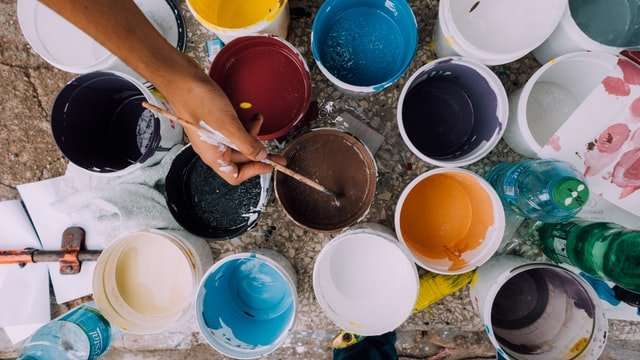These days, the Internet makes it possible to make a living doing what you love. And, yes, that includes drawing.
You don’t need years of training in a specialized field to be able to make a living—but you do need to have some talent, and be willing to work hard.
Artists have always had to struggle. But now that the Internet is here, they no longer have to struggle alone. Like-minded artists find each other online and create new opportunities for themselves.*
You may have heard the old saying, “Those who can, do. Those who can’t, teach.” The truth is that we all started off as amateurs, whether or not we are teachers now.
We all started drawing or painting as small children. Those of us who kept it up became artists. Some of us became professionals, and most of us became hobbyists.
I’ve always been interested in how people who draw or paint as a hobby go on to make a living with their art. Very few artists I know have ever been able to support themselves entirely by their art alone. But many people who are passionate about art find ways to earn money doing something else while they pursue their artistic ambitions on the side.
The most common way is to offer instruction or workshops on their craft. This seems to be especially true for painters and sculptors, although there are plenty of great photographers and graphic artists as well. Other popular ways include selling prints, original artwork, hand-made greeting cards, or original fine art reproductions from photographs.*
Being a professional artist means that your art is your job, so you can make money by selling it. Being a professional artist also means that you have a lot of business and marketing skills so you can reach more people to buy it.
While drawing is something you do for fun, being a professional artist means that you are an entrepreneur with the skills and knowledge to build an audience and earn a living.
Being a professional artist is more than just showing your portfolio and selling pieces. It’s about being able to sell yourself as well. You need to be able to represent yourself in the best way possible, promote your work, and keep track of your sales.
Being an artist has always been hard, but today it’s even harder because there are hundreds of thousands of other artists doing exactly what you’re doing – and trying to get the same audience you want.
Being a professional artist means being able to manage all these aspects, so that you can still focus on creating awesome art.”
Being a caricature artist is not only a wonderful profession, it is also a great business. The reason for this is because the business runs on tips. Clients typically give the artist $20 to $40 per hour of work. The artist is able to charge such high prices because he or she can quickly produce a drawing that will delight and capture the attention of most everyone who sees it.
TIP: Making caricatures is not a difficult art to learn, however, being able to draw well enough to do them professionally takes practice. Many artists practice for years before they are confident enough in their artistic ability to make this their primary source of income.
The ability to draw well enough to earn your living as an artist takes dedication and patience but if you have those qualities and love what you do, making money as an artist may be right for you. Here are several steps that can help you begin:**
Linda Johansson is a Swedish artist who produces beautiful pencil drawings of all kinds of things, ranging from cute animals to big, scary monsters. She has sold many of her works, and in order to pursue this career she had to learn how to manage her time and find the motivation to keep drawing.
She also gives advice on how to take the next step if you want to become a professional artist:
“I think that it is important to set small goals for yourself, then when you achieve them you get more motivated and try to set bigger goals.
Trying new techniques/media can be rewarding too, but sometimes they are not as well received as your old stuff.” Linda Johansson
It’s no secret that artists can make a good living today. But how do they do it? There is rarely a single, step-by-step guide to success. The road to becoming a professional artist is different for everyone, but there are some common threads running through the stories of artists who have made it work.
The Artist’s Journey blog has published interviews with over 70 artists from around the world and has compiled their advice into one resource filled with personal stories, practical tips and real-world examples of what it takes to become a professional artist.
Let’s take a look at some of the main takeaways from those interviews:
Work on your craft like a business: You need to be prolific, professional and always growing as an artist if you want to succeed as an artist. This means constantly honing your skills, managing your time and maintaining your website or portfolio. You need to create tons of art, whether or not you are getting paid for it, so you can learn what works and what doesn’t in terms of fine-tuning your style. And this is all before you even start marketing yourself!
Be persistent: It takes time to figure out what works and build up your audience. Many artists who are now successful spent years sending out their
New artists are always asked, how they became recognized. Well, some were discovered by scouts, others had their work published. But the most common way is by submitting something to a competition.
Competitions can be a great way for an artist to become noticed. On paper it may seem like the easy way to get there, but in reality it’s not so simple.
The idea of competitions is to show people what you’re capable of and get you noticed. If you want to be noticed by professionals, then you’ve got to be up to par with other artists who are submitting their work too. Everything has to be perfect and polished before sending your work in. This includes:
The drawing/painting
The frame
The title if any
And anything else about the submission.
The framing is very important if your art will be judged on its own merit, otherwise it’s considered part of the overall piece, which will be judged based on the art only. The frame can make or break your piece, since it’s what holds everything together and grabs viewers’ attention.



